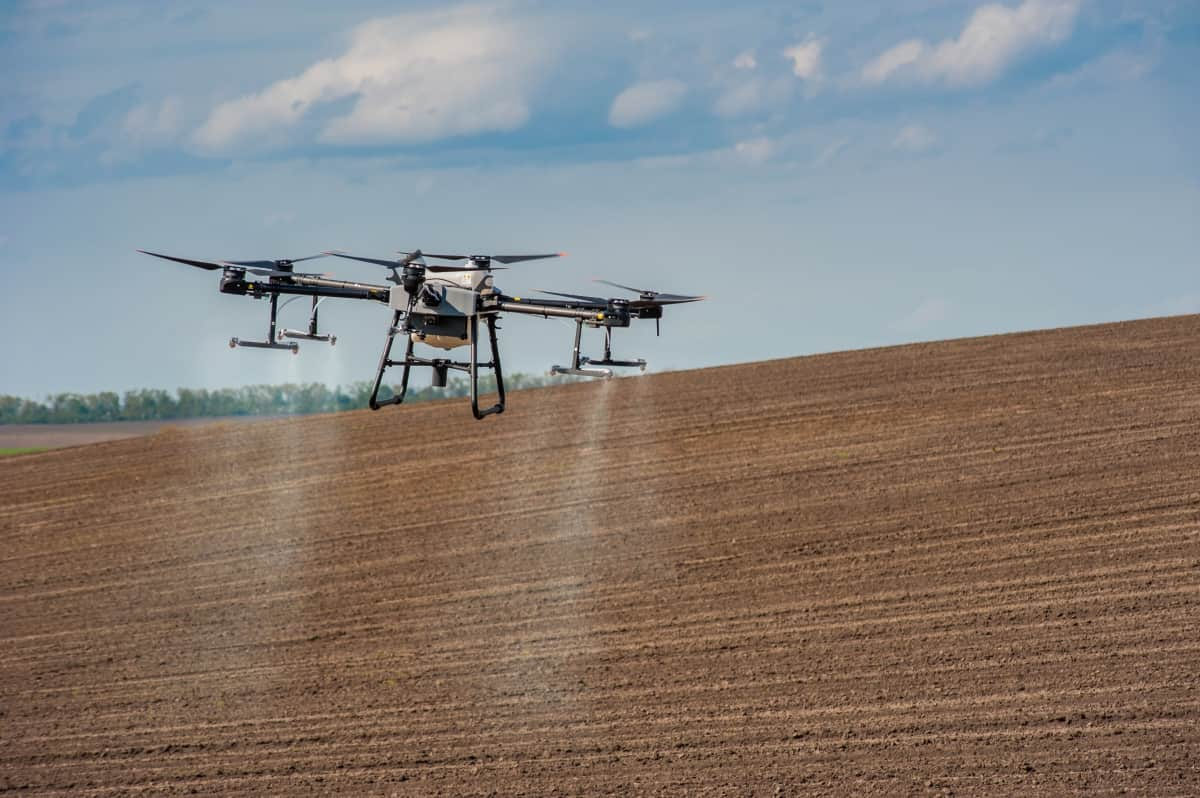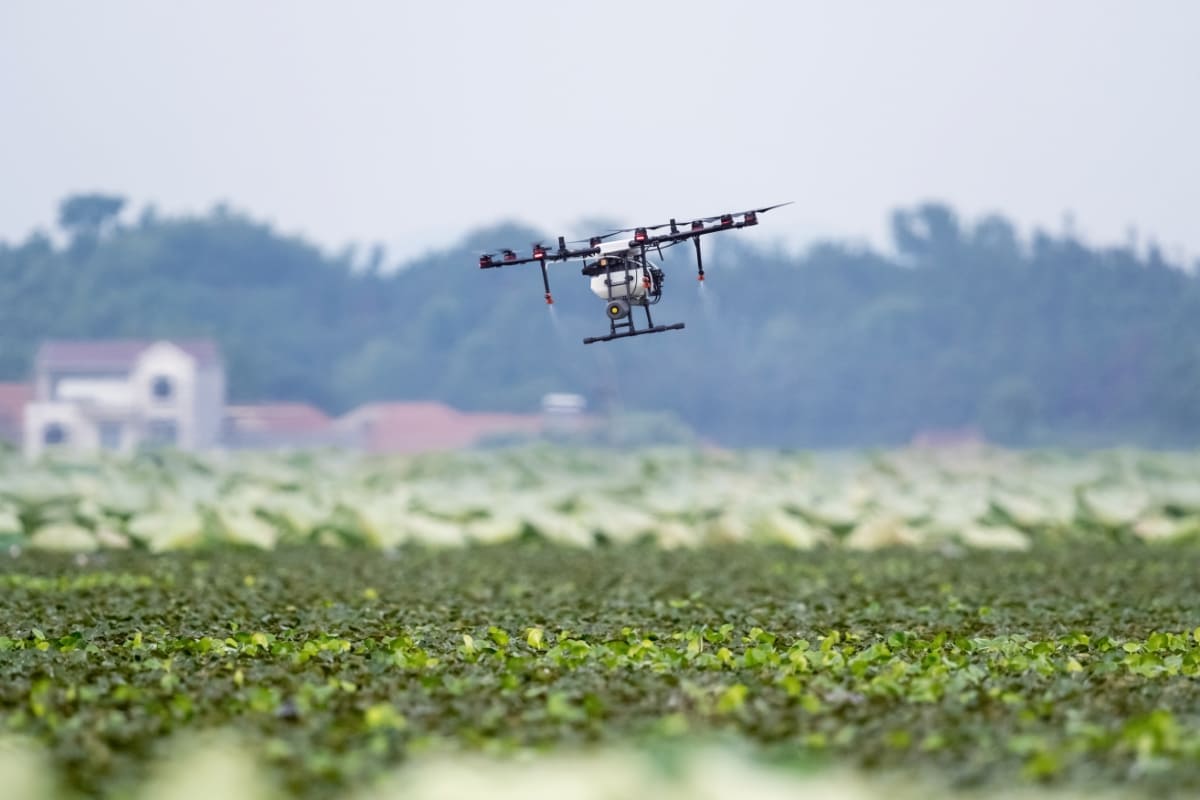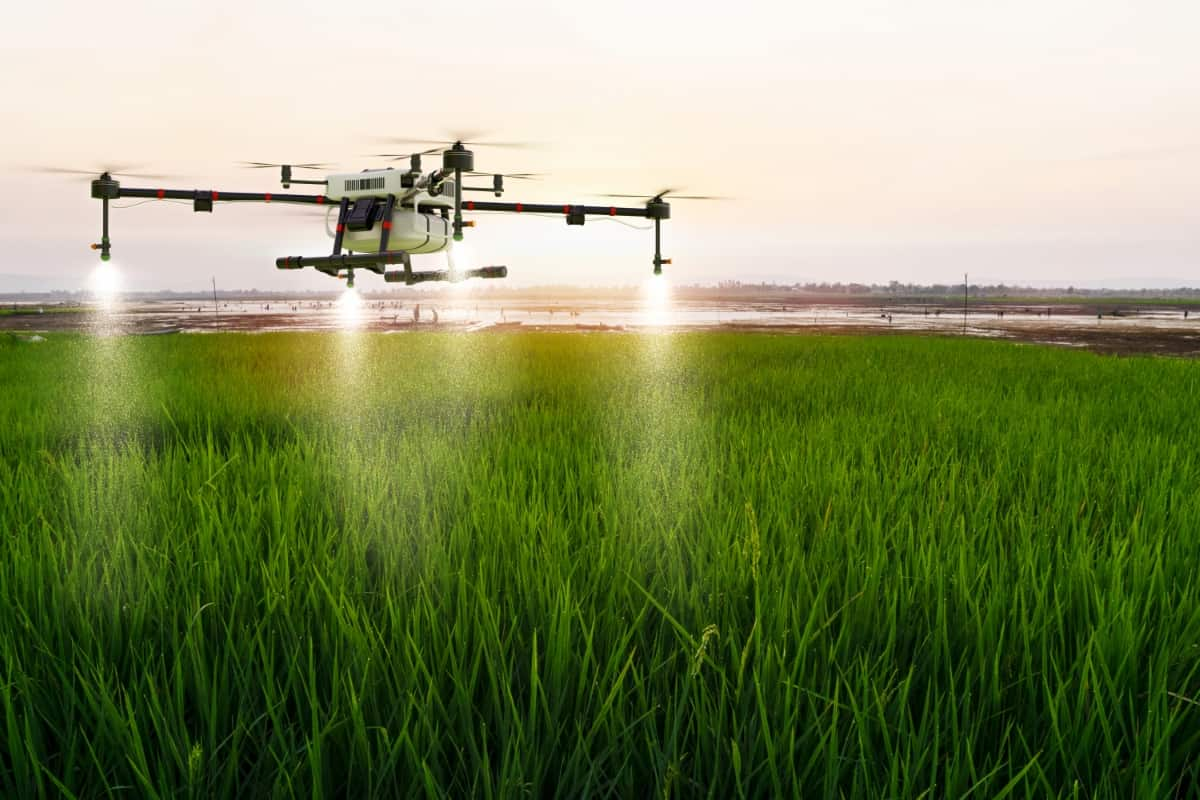Unleashing the power of technology in agriculture has revolutionized how farmers cultivate their land and nurture their crops. In recent years, one innovative tool has taken center stage – drone sprayers. These unmanned aerial vehicles have quickly become a game-changer for farmers worldwide, providing a host of once unimaginable benefits. Using drone sprayers in agriculture has revolutionized how farmers approach crop management. These advanced technologies offer many benefits that can greatly enhance farming practices.

10 Benefits of Drone Sprayers in Agriculture
Increased Efficiency and Precision
Drone sprayers have revolutionized the way agriculture is conducted, bringing increased efficiency and precision to farming practices. With traditional methods, farmers often had to rely on manual labor or large machinery to apply pesticides or fertilizers. This consumed valuable time and led to inconsistent application and potential crop damage. However, with drone sprayers, farmers can now cover larger areas in less time.
With advanced GPS technology and automated flight patterns, these drones can precisely target specific crops or areas requiring treatment. Farmers can ensure each plant receives nutrients or protection without wasting resources on unaffected areas. Moreover, the ability of drone sprayers to fly at low altitudes allows for better coverage of crops. By flying closer to the plants themselves, they can deliver precise amounts of chemicals directly where they are needed most.
Reduced Environmental Impact
When it comes to agriculture, the use of drone sprayers offers a significant advantage in terms of reducing environmental impact. Traditional methods of spraying crops often involve excessive and indiscriminate application of chemicals, which can harm the environment. However, with the precision and accuracy of drone sprayers, farmers can now minimize chemical usage and target specific areas requiring treatment.
One key benefit is the reduction in chemical runoff into nearby water sources. By targeting only the areas needing treatment, drone sprayers minimize the chemicals in rivers, lakes, or groundwater reservoirs. This helps preserve these vital resources and protect aquatic ecosystems from potential contamination. Additionally, drone sprayers can also reduce air pollution caused by traditional farming practices. With their ability to apply pesticides or fertilizers directly onto crops without overspray or drift, there is less chance for harmful substances to be released into the air.
Cost Savings
Traditional crop spraying methods often involve large machinery and manual labor, which can be expensive to maintain and operate. However, drones offer a more cost-effective alternative. By utilizing drone technology, farmers can reduce their operational costs significantly. Drones require less fuel than traditional equipment, lowering fuel consumption expenses.
In case you missed it: Drones for Fruit Farmers: Advantages and Benefits

Additionally, with drones, there is no need to invest in expensive specialized machinery or hire additional workers for application tasks. Moreover, drones can cover larger areas within a shorter period than conventional methods. This increased efficiency means farmers can save time and money by completing spraying operations more quickly.
Enhanced Crop Health and Yield
One of the major benefits of using drone sprayers in agriculture is the ability to enhance crop health and improve overall yield. Drones with advanced sensors and cameras can provide valuable insights into plant health, allowing farmers to proactively address any issues before they become widespread. By utilizing drones for spraying, farmers can ensure that crops receive an even distribution of fertilizers, pesticides, or herbicides.
This precise application minimizes waste and reduces the risk of overexposure or underexposure to chemicals. As a result, crops are better protected against pests, diseases, and weeds while maximizing their growth potential. Moreover, drone sprayers offer increased efficiency by reaching areas that may be difficult or time-consuming for traditional methods such as manual labor or large machinery. They can easily navigate different terrains and get even the most remote field parts.
Flexibility in Application
Unlike traditional spraying methods, drones can easily maneuver through crops, reaching areas difficult for humans or large machinery to access. No corner of the field goes untreated, resulting in more even and adequate coverage. Drones also offer the advantage of adjusting their spraying patterns and volumes based on specific crop needs.
They can be programmed to spray different types of pesticides or fertilizers at varying rates, ensuring every plant receives what it requires for optimal growth. Furthermore, drone sprayers can be used across various terrains and crops. Whether it’s a hilly landscape or a dense orchard, drones can navigate with precision and deliver targeted applications without damaging surrounding plants or soil.
Improved Worker Safety
Worker safety is a top priority in any industry, and agriculture is no exception. Traditional methods of applying pesticides and fertilizers involve manual labor, exposing workers to potentially harmful chemicals and physical risks. However, with the introduction of drone sprayers in agriculture, worker safety has been significantly improved.
One of the main advantages of drone sprayers is that they reduce or eliminate the need for human operators to be physically present during spraying operations. Furthermore, drones can reach areas that might be difficult or dangerous for humans to access safely. Steep slopes, uneven terrain, or areas prone to flooding are no longer a concern when using drone sprayers. The ability to operate remotely also reduces the risk of accidents caused by fatigue or human error.
Remote Monitoring and Management
One of the significant benefits of using drone sprayers in agriculture is the ability to monitor and manage crop health remotely. With traditional methods, farmers often have to physically inspect their fields to assess plant growth, detect diseases or pests, and determine if any interventions are required. This process can be time-consuming and labor-intensive. However, with drone technology, farmers can now easily access real-time data about their crops from a remote location.
In case you missed it: Robotic Bees for Pollination: Tiny Drones for Artificial Pollination in Agriculture, Pros, and Cons

With advanced sensors and cameras, drones can capture high-resolution images of fields, allowing farmers to closely monitor plant health parameters such as leaf coloration or stress levels. The images collected by drones can be instantly transmitted to a centralized system via Wi-Fi or cellular networks. Farmers can then analyze this data using specialized software that provides insights into crop conditions. By monitoring crops remotely, farmers gain valuable information about potential issues early on, enabling them to take timely action.
Adaptability to Various Terrains
Drone sprayers are revolutionizing agriculture, and one of their standout features is their adaptability to various terrains. Whether it’s hilly slopes, rugged landscapes, or vast fields with uneven surfaces, these drones can easily navigate them all. With traditional manual spraying methods, accessing hard-to-reach areas could be a challenge. Farmers often had to rely on walking or using heavy machinery that could damage crops or the soil. However, drone sprayers have changed the game by effortlessly maneuvering through any terrain.
Their ability to fly at different altitudes allows them to reach even the most inaccessible spots without causing harm. Farmers can treat every inch of their land without worrying about missed areas or crop damage. Moreover, drone sprayers can adjust their flight patterns and techniques based on the specific terrain they encounter. They can sense changes in altitude and adjust accordingly for precise application of pesticides or fertilizers. This adaptability ensures that crops receive optimal treatment regardless of the landscape’s challenges.
Reduced Chemical Exposure
One of the significant benefits of using drone sprayers in agriculture is the reduced chemical exposure for farmers and workers. Traditional methods of spraying crops often involve direct contact with harmful chemicals, posing health risks to those handling them. However, drone sprayers provide a safer alternative. With drone technology, farmers can precisely target specific areas that require treatment, minimizing the overall amount of chemicals used.
This targeted approach reduces chemical exposure and minimizes the impact on non-target plants and organisms. Furthermore, drones are equipped with advanced sensors and imaging systems that allow for real-time monitoring and adjustment of spray application rates. This ensures an even distribution of pesticides or fertilizers without over-spraying or wasting valuable resources.
Data Collection and Analysis
Drones with advanced sensors and imaging technology can collect vast data about crop health, soil conditions, and pest infestations. This real-time data allows farmers to make informed decisions about when and where to apply pesticides or fertilizers, reducing waste and maximizing efficiency. Furthermore, drones offer the ability to analyze this collected data quickly and accurately. This enables them to proactively address problems before they escalate into larger-scale issues that could impact crop yield.
In case you missed it: Subsidies for Women in Agriculture and Financial Assistance by the Government of India

Conclusion
Drones have proven indispensable in modern agriculture due to their numerous advantages, including increased efficiency and cost savings, precision application capabilities resulting in healthier crops with reduced environmental impact, and improved safety measures for farmers. By embracing this innovative technology now while staying informed about its ongoing developments—farmers will be poised to reap significant benefits today and tomorrow.
- Feed Your Flock for Less: Top 10 Tips to Save on Chicken Feed
- Ultimate Guide to Ossabaw Island Hog: Breeding, Raising, Diet, and Care
- Hatching Answers: The Top 10 Reasons Your Chickens Aren’t Laying Eggs
- Eggs and Economics: Breaking Down the Cost of Raising Backyard Chickens
- Defend Your Greens: Proven Methods to Keep Iguanas Out of Your Garden
- Ultimate Guide to Cinnamon Queen Chicken: A Comprehensive Guide for Beginners
- Ultimate Guide to California Tan Chicken: Breeding, Raising, Diet, Egg-Production and Care
- Ultimate Guide to Marsh Daisy Chicken: Breeding, Raising, Diet, and Care
- 10 Types of Chicken Farming Businesses You Can Start for Profits